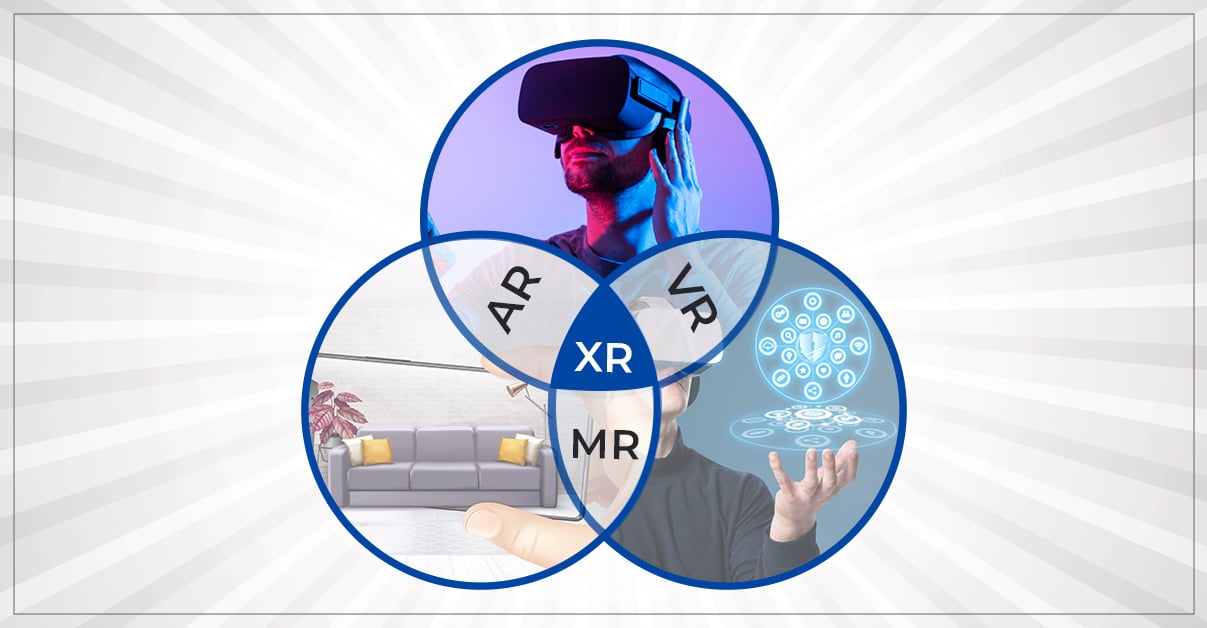Technology is transforming the way brands interact with consumers, and augmented reality (AR), virtual reality (VR), and mixed reality (MR) are leading the charge. These immersive technologies are reshaping digital marketing and experiential marketing, allowing brands to create interactive, personalized, and highly engaging experiences that drive deeper customer connections.
As consumers demand more immersive brand interactions, AR, VR, and MR provide the tools to blend digital content with the real world, making marketing campaigns more dynamic, engaging, and effective. Whether it’s through AR-powered social media filters, VR brand experiences, or MR-enhanced interactive advertising, these technologies are redefining marketing in ways never seen before.
In this article, we’ll explore how AR, VR, and MR are revolutionizing digital marketing, highlight key use cases, and discuss how Towerhouse Global can help brands leverage these technologies to create next-level experiential marketing campaigns and live event activations.
1. Understanding AR, VR, and MR in Digital Marketing
What is Augmented Reality (AR)?
Augmented reality overlays digital elements (such as 3D images, animations, and interactive filters) onto the real world using a smartphone, tablet, or AR glasses. Unlike virtual reality, AR does not replace the real world—it enhances it.
📌Example:
- Sephora’s Virtual Artist App – Uses AR to allow customers to try on makeup virtually before purchasing.
✔Why AR Matters in Digital Marketing:
✅Creates interactive shopping experiences, increasing customer engagement.
✅Bridges the gap between e-commerce and in-store retail.
✅Encourages social media sharing and viral brand exposure.
What is Virtual Reality (VR)?
Virtual reality immerses users in a fully digital environment, cutting them off from the physical world and transporting them into a 3D, interactive space. Users typically experience VR through headsets such as Oculus, HTC Vive, or PlayStation VR.
📌Example:
- IKEA’s VR Showroom – IKEA allows customers to step into a virtual home and interact with furniture before making a purchase.
✔Why VR Matters in Digital Marketing:
✅Creates highly immersive brand experiences.
✅Allows virtual product trials without a physical store.
✅Transforms storytelling through interactive brand narratives.
What is Mixed Reality (MR)?
Mixed reality (MR) combines AR and VR, allowing users to interact with both the digital and physical worlds simultaneously. MR anchors digital objects into real-world environments, enabling users to engage with virtual content in a natural, interactive way.
📌Example:
- Microsoft HoloLens – Allows architects and engineers to view 3D holograms of buildings and make real-time adjustments.
✔Why MR Matters in Digital Marketing:
✅Enables real-time, hands-on product interactions.
✅Provides a seamless blend of digital content and reality.
✅Allows brands to create next-level immersive storytelling.
How Towerhouse Global Can Help:
We specialize in integrating AR, VR, and MR into digital and experiential marketing campaigns, ensuring brands create engaging, interactive experiences that captivate audiences.
How AR, VR, and MR Are Transforming Digital Marketing
- Augmented Reality in Digital Advertising & E-Commerce
📌Why It Matters:
- AR-powered ads and interactive e-commerce tools enhance customer decision-making and boost conversions.
- Brands use AR filters, interactive packaging, and virtual try-ons to engage customers in new ways.
📌Example:
- Gucci’s AR Sneaker Try-On – Users can try on Gucci sneakers virtually using AR before purchasing online.
✔Why This Works:
✅Reduces return rates by ensuring customers choose the right product.
✅Increases engagement by offering an interactive shopping experience.
✅Encourages users to share branded AR experiences on social media.
How Towerhouse Global Helps:
We develop AR-powered digital campaigns that enhance brand storytelling and drive e-commerce success.
- Virtual Reality for Immersive Brand Experiences
📌Why It Matters:
- VR allows brands to create 360-degree experiences where customers can explore a brand’s world.
- VR-based storytelling enables deeper emotional connections between brands and consumers.
📌Example:
- Volvo VR Test Drives – Volvo created a VR test drive experience that lets users explore its vehicles without visiting a dealership.
✔Why This Works:
✅Brings products to life in a highly immersive way.
✅Reaches global audiences without physical constraints.
✅Drives customer excitement and brand loyalty.
How Towerhouse Global Helps:
We create custom VR brand activations and immersive experiences that engage consumers and enhance storytelling.
- Mixed Reality for Interactive Retail & Live Events
📌Why It Matters:
- MR transforms retail spaces by allowing customers to interact with digital content in real-time.
- Brands can use MR for live event activations, product demos, and experiential marketing campaigns.
📌Example:
- Nike’s MR Shopping Experience – Nike uses MR to allow customers to scan products and receive instant, interactive digital content.
✔Why This Works:
✅Combines physical and digital interactions for seamless engagement.
✅Creates a futuristic shopping experience that drives customer interest.
✅Increases foot traffic and in-store conversions.
How Towerhouse Global Helps:
We design MR-powered retail and live event experiences that elevate brand engagement and innovation.
3. The Future of Experiential Marketing with AR, VR & MR
📌Emerging Trends to Watch:
✔Metaverse Brand Activations – Brands will create virtual worlds and AR-powered commerce experiences.
✔AI-Driven Personalization – AI-powered AR and MR will tailor brand experiences to individual users.
✔Wearable AR & MR Devices – Smart glasses will enhance hands-free digital interactions.
📌Example:
- Facebook & Ray-Ban Smart Glasses – Allow users to capture and interact with AR content in real time.
✔Why This Matters:
✅Brands that adopt AR, VR, and MR early will lead the next era of digital marketing.
✅Consumers expect brands to create highly interactive, personalized experiences.
✅Immersive marketing will drive customer loyalty and brand engagement.
4. How Towerhouse Global Can Help Brands Implement AR, VR & MR
📌Our Services:
✔Augmented Reality Brand Activations – Interactive AR experiences for retail, e-commerce, and advertising.
✔Virtual Reality Marketing Campaigns – Fully immersive VR experiences for product launches and storytelling.
✔Mixed Reality Live Events – MR-powered brand activations that blend digital and real-world interactions.
✔AI-Powered Personalization – Using data-driven insights to enhance AR & MR experiences.
📩Contact Towerhouse Global today to develop a high-impact AR, VR, or MR marketing campaign that captivates audiences and transforms brand engagement! 🚀
Final Thoughts: Why AR, VR, and MR Are the Future of Digital Marketing
✔Augmented reality, virtual reality, and mixed reality transform passive marketing into interactive engagement.
✔Brands that invest in these technologies will gain a competitive edge.
✔Experiential marketing powered by AR, VR, and MR will drive deeper customer connections.
At Towerhouse Global, we specialize in:
✅Developing immersive marketing campaigns using AR, VR, and MR.
✅Enhancing digital and live event experiences with cutting-edge technology.
✅Creating unforgettable consumer experiences that increase brand loyalty and engagement.
Ready to elevate your marketing strategy? Contact Towerhouse Global today!





